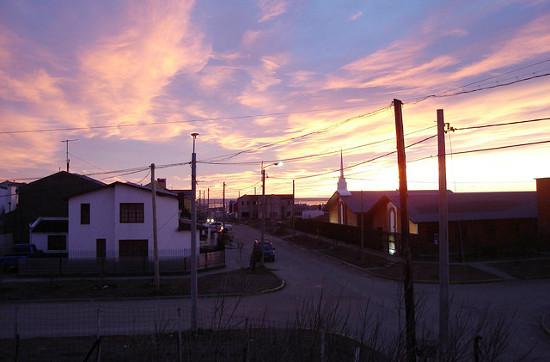Río Grande See map
Economic capital of the province, Río Grande is the head of the northern part of the island. In it converge industry, oil and livestock. Although its origin is more akin to farming today it exhibits clear evidence of industrial development. Its broad avenues lead to whole neighborhoods of industrial warehouses that are combined with neighborhoods of many homes. In return, the main streets have been decorated with beautiful flower beds walks to which then colorful monuments in cement were incorporated. Today it has about 35,000 residents and accomodation and gastronomy of good standard.
 Sunset in Río Grande. Photo courtesy of Galio..
Sunset in Río Grande. Photo courtesy of Galio..In addition to function as a starting point for visits to the rooms in the region, Río Grande has become, thanks to the annual planting of fingerlings, in an important area for fishing (for which it is necessary to get a permit). This area is chosen by national and foreign fishermen to practice fly casting and spinning.
Brief history
The economic movement produced by the establisment of cattle ranches in the area, generates the settlement of colonists from the gold mine of San Sebastián. Thirty years later, in 1921, it was officially founded Río Grande. In 1959 the era of oil began generating a migration flow that is complemented with the one in the 70s and 80s because of the enactment of the Economic Development Act that through tax breaks and subsidies settled industries and residents.
Viajes por la Patagonia
Related Articles
© Patagonia.com.ar 2025 | Todos los derechos reservados.
